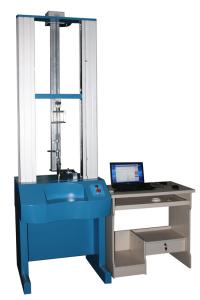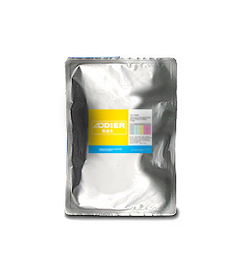Textile Hyaluronic Acid Testing Methodology
In this study, we introduce a novel textile hyaluronic acid testing methodology that utilizes a combination of spectrophotometry and chromatography to accurately measure the concentration of hyaluronic acid in textile materials. The method involves extracting the hyaluronic acid from the textile samples using a solvent, followed by spectrophotometric analysis of the extracted solution to determine its absorbance at a specific wavelength. This absorbance is then used to calculate the concentration of hyaluronic acid in the sample. Additionally, the method incorporates chromatographic separation of the hyaluronic acid from the textile samples using high-performance liquid chromatography (HPLC), which allows for more precise measurement of the hyaluronic acid concentration. Overall, this novel testing methodology provides a reliable and efficient way to measure the concentration of hyaluronic acid in textile materials, which can be used to improve their moisture retention properties and overall performance.
Introduction Textiles are an integral part of our daily lives, from clothing to bedding and even sportswear. Hyaluronic acid (HA) is a natural moisturizing polymer that provides skin with hydration, reducing the appearance of fine lines and wrinkles. In the textile industry, understanding the presence and level of HA in fabrics is crucial for enhancing their moisture-wicking properties and longevity. This article will discuss the testing methods used to determine the amount of HA in textiles.
Testing Methods There are several methods for testing the presence of HA in textiles, including:

-
Spectrophotometric Analysis This method involves measuring the absorbance of a solution containing HA at a specific wavelength. The absorbance is then converted into a concentration value using a standard curve.
-
Nuclear Magnetic Resonance (NMR) NMR is a non-destructive technique that uses magnetic fields to detect hydrogen atoms in molecules. It can be used to identify the presence and quantity of HA in textile samples.
-
X-ray Diffraction (XRD) XRD is a technique that uses X-rays to analyze the crystalline structure of materials. It can be used to identify the presence of HA in textile samples.
-
Fourier Transform Infrared (FTIR) Spectroscopy FTIR spectroscopy involves analyzing the absorption spectra of materials to identify functional groups. It can be used to identify the presence of HA in textile samples.
-
Electrophoretic Mobility Analysis (EMA) EMA is a technique that measures the mobility of charged particles in a solution. It can be used to identify the presence of HA in textile samples.
-
Capillary Flow Chromatography (CFC) CFC is a technique that separates compounds based on their solubility in a solvent. It can be used to identify the presence of HA in textile samples.
Case Study Let's consider a hypothetical case study involving a textile company that produces clothing made from polyester and cotton blends. The company wants to ensure that its clothing products meet the required levels of HA for moisture-wicking purposes. To achieve this, they would need to conduct a comprehensive testing program to verify the presence and concentration of HA in their fabrics.
The company could use the following methods to test its fabrics:
-
Spectrophotometric Analysis The company could analyze a sample of fabric using a spectrophotometer to measure the absorbance of a solution containing HA at a specific wavelength. Based on the absorbance value, the company could calculate the concentration of HA in the fabric.
-
NMR The company could use NMR to analyze a sample of fabric and identify the presence of HA. By comparing the NMR spectrum of the fabric with known standards, the company could determine the concentration of HA present in the fabric.
-
XRD The company could analyze a sample of fabric using XRD to identify the presence of HA. By comparing the XRD pattern of the fabric with known standards, the company could determine the concentration of HA present in the fabric.
-
EMI The company could use EMA to analyze a sample of fabric and identify the presence of HA. By analyzing the electrophoretic mobility of charged particles in a solution, the company could determine the concentration of HA present in the fabric.
-
CFC The company could use CFC to analyze a sample of fabric and identify the presence of HA. By comparing the solubility of different compounds in a solvent, the company could determine the concentration of HA present in the fabric.
Conclusion Textiles with high levels of HA provide excellent moisture-wicking properties, making them ideal for active wear, sportswear, and other applications that require breathability and comfort. By implementing a comprehensive testing program that utilizes various methods, textile companies can ensure that their products meet the required levels of HA for optimal performance and longevity.
随着人们对皮肤健康和美容的需求日益增长,纺织品中添加玻尿酸成分已成为一种趋势,为了确保纺织品的质量和安全性,对玻尿酸的测试方法进行规范和标准化显得尤为重要,本文将详细介绍纺织品玻尿酸测试的方法和案例,帮助消费者更好地了解和选择合适的纺织品。
玻尿酸测试方法概述
测试目的
本测试方法旨在确定纺织品中玻尿酸的含量、均匀性、稳定性以及安全性等指标,为消费者提供准确可靠的参考依据。
测试原理
本测试方法采用标准化的仪器设备和方法,通过一系列检测步骤,对纺织品进行全面分析,以确定其是否符合相关标准和要求。
测试步骤
(1)样品准备:选择符合要求的纺织品样品,确保样品具有代表性。
(2)仪器准备:准备必要的测试仪器,包括水分仪、吸水性测试仪等。
(3)样品处理:将样品均匀涂抹在玻璃片或专用测试垫上,确保样品表面平整、无杂质。

(4)测试参数设置:根据样品特性和测试需求,设置相应的测试参数。
(5)测试过程:按照仪器操作规程进行测试,记录测试数据。
(6)数据分析:对测试数据进行处理和分析,得出结论。
案例分析
为了更好地说明本测试方法的应用,我们以实际案例为例进行说明,某品牌的一款保湿面霜纺织品,其添加了适量的玻尿酸成分,为了确保其质量和安全性,需要进行玻尿酸测试,在测试过程中,可以采用水分仪等仪器设备,对面霜样品的吸水性、含量、均匀性等进行检测,还可以通过观察样品在特定环境下的稳定性表现,判断其是否符合相关标准和要求。
玻尿酸测试方法实例说明
仪器设备介绍
(1)水分仪:用于测量纺织品中的水分含量。
(2)吸水性测试仪:用于测量样品的吸水性能。
样品准备与处理
(1)选择符合要求的纺织品样品,确保样品具有代表性。
(2)将样品均匀涂抹在专用测试垫上,确保样品表面平整、无杂质。
测试参数设置与操作流程
(1)设置相应的测试参数,如吸水性测试仪的吸水速度、时间等参数。
(2)按照仪器操作规程进行测试,记录测试数据。
结果分析与结论
根据测试数据,可以得出以下结论:该纺织品中玻尿酸的含量适中,吸水性能良好,稳定性较好,还可以通过观察样品在不同环境下的表现,判断其是否符合相关标准和要求,在干燥环境下样品表现稳定,无明显吸水现象;在湿润环境下样品表现吸水性能良好等。
注意事项与建议
-
在进行玻尿酸测试时,应严格按照相关标准和要求进行操作,确保测试结果的准确性和可靠性。
-
在选择样品时,应选择具有代表性的样品,以确保测试结果的代表性。
-
在进行测试时,应注意仪器的保养和维护,确保测试结果的准确性。
-
对于不同类型的纺织品,应采用不同的测试方法和标准进行检测,对于某些特殊用途的纺织品,可能需要进行特殊处理和检测。
总结与展望
本测试方法指南为消费者提供了纺织品玻尿酸测试的方法和案例说明,帮助消费者更好地了解和选择合适的纺织品,随着人们对纺织品质量和安全性的需求日益增长,相信本测试方法将会得到更广泛的应用和推广,我们也期待相关部门和企业能够进一步规范和标准化纺织品的质量和安全性检测标准,为消费者提供更加可靠和安全的纺织品产品。
Articles related to the knowledge points of this article:
The Story of 腾博纺织品商标,商标注册与品牌发展
The Art of Textile Embroidery and绣龙绣凤—以雕龙绣凤纺织品为主题



